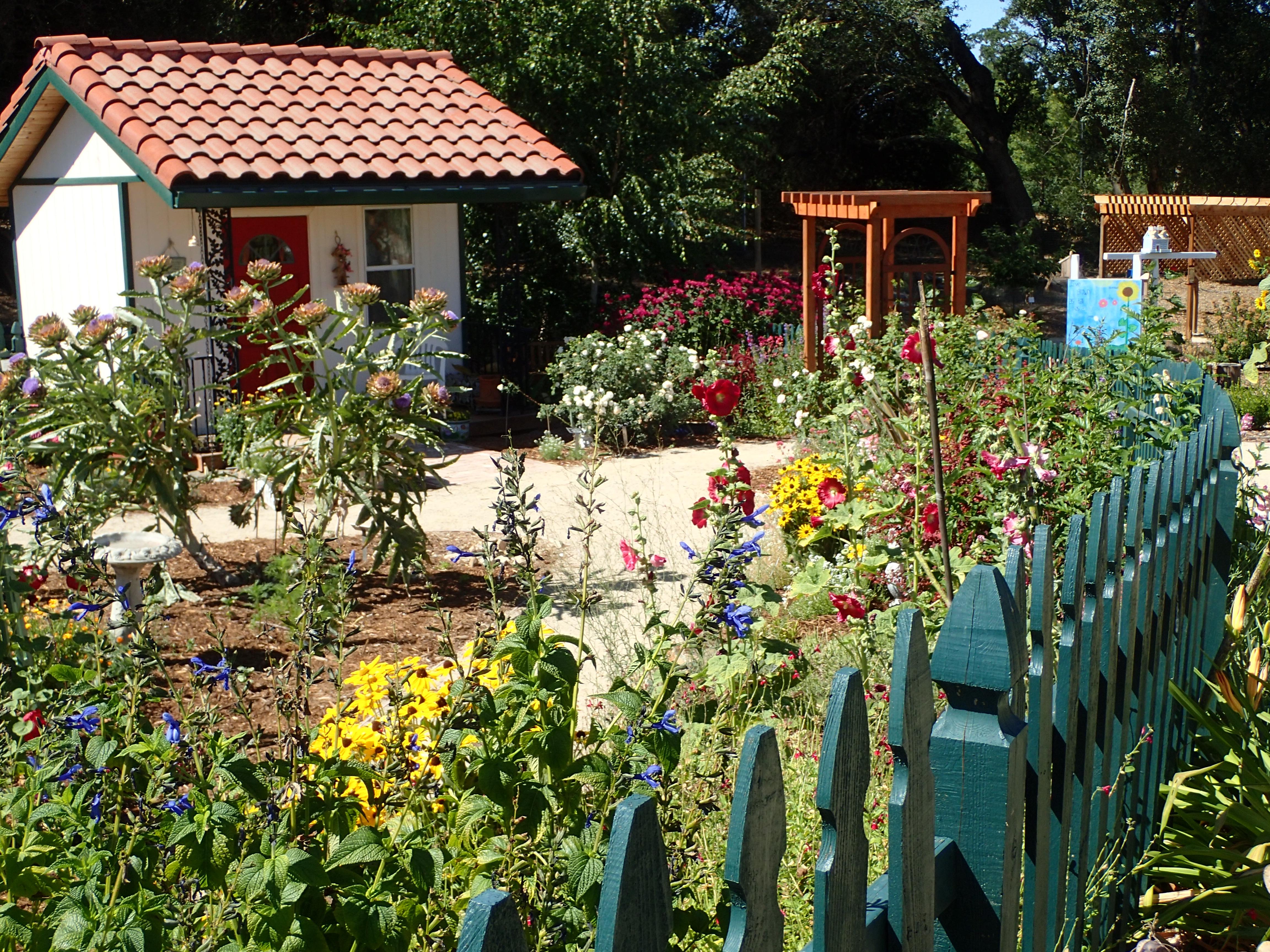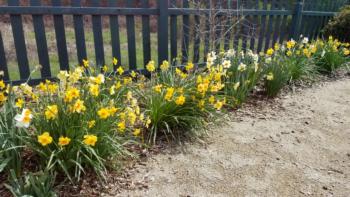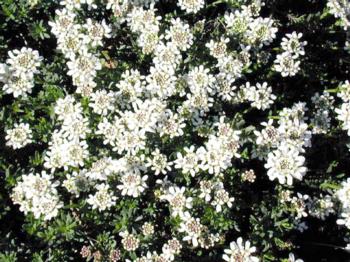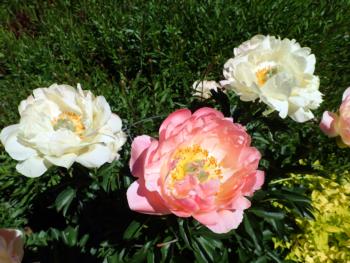Cottage Garden

Objective and Design
Cottage gardens date back to the 1480s when local Englishmen were finally able to tend their own gardens, outside the protection of castle walls. These were hard-working laborers who didn't have the time or energy to spare for mere prettiness and they had limited space. Cottage plants were primarily edibles or medicinals, including large vegetable, herb, and fruit gardens, interspersed with a few flowers. The farmers learned what plants helped or hindered others, when planted next to each other. The cottage garden traditionally held a pig sty, a chicken coop, and bee hives as well to round out the cottager's fare.
Around the end of the eighteenth centuries, these poor peasants were joined by the first wave of back-to-the-landers. Members of the gentry began to idealize the cottage life and to create their own cottage gardens. This is when the cottage garden began to veer toward prettiness for its own sake, with scads of flowers often replacing the original mixture of edible plants and animals. Flowers brought bees, butterflies and other insects for help in pollinating their gardens. In either case, though, cottage gardens were beautiful. While the vegetable patch was usually planted in bare, straight rows, the rest of the garden consisted of plants pushed together until no soil could be seen between the leaves. This informal clumping is the signature feature of the cottage garden and can also be seen in the hodge-podge of closely packed flowers.
Cottagers couldn't afford to buy flowers, so they often dug up pretty wildflowers to transplant into their garden, or traded plants with their neighbors. The flowers in a traditional cottage garden were easy to propagate and often self-sowed, needing little care. The close spacing of flowers in the cottage garden helped minimize the amount of time the cottager spent weeding since the flowers choked out any weeds.
Modern-day cottage gardens include countless regional and personal variations of the more traditional English cottage garden, and embrace plant materials, such as ornamental grasses or native plants, that were never seen in the rural gardens of cottagers. Traditional roses, with their full fragrance and lush foliage, continue to be a cottage garden mainstay — along with modern disease-resistant varieties that keep the traditional attributes. Informal climbing plants, whether traditional or modern hybrids, are also a common cottage garden plant. Self-sowing annuals and freely spreading perennials continue to find a place in the modern cottage garden, just as they did in the traditional cottager's garden. Cottage gardens are living proof that small is definitely beautiful: They rarely suffer from diseases and pests due to the wide variety of plants used in small numbers - I believe this is known as "bio-diversity" in modern-day “techno-speak.”
There's never been a time when cottage gardening has been more relevant than it is today - it's small-scale, natural and organic, has a very positive effect on the environment and we can all do it ourselves.
If, you're looking for plants that will turn your garden into a romantic place filled with flowers, birds and insects then Cottage Gardening is for you!
What's New!
Spring is creeping into the Cottage Garden. The indestructible daffodils are laughing at our "Miracle March" weather. Neither frost, nor snow, nor torrential rain can stop their smiling faces. Our Candytuft is also in bloom and is a garden favorite for it blooms throughout the summer. The peonies are shooting up their healthy stems. They will be a show stopper! With the incoming warmer weather the Cottage Garden will be in brimming with flowers.




